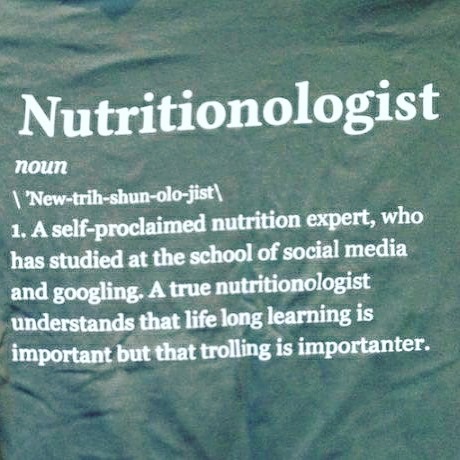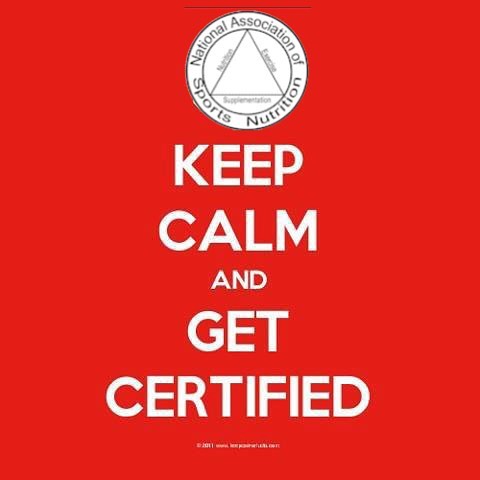Interesting read…
https://jissn.biomedcentral.com/articles/10.1186/s12970-017-0184-9
Interesting read…
https://jissn.biomedcentral.com/articles/10.1186/s12970-017-0184-9


Check out this article with accompanied study that shows old guys increasing their muscle with collagen…

Nutritional Outlook recently caught up with Gelita (Sergeant Bluff, IA), which talked about how the company’s latest collagen peptide ingredient, BodyBalance, continues to focus on body composition and whole-muscle health. Lara Niemann, Gelita’s marketing director, Americas, says that just as the rest of Gelita’s collagen peptide portfolio emphasizes “taking care of your skin, taking care of your joints,” BodyBalance is about “taking care of your muscles.”
Studies, including one published in 2015 in The British Journal of Nutrition1 and conducted in men suffering from age-related muscle loss (sarcopenia), support the positive benefits of collagen peptides on body and muscle composition following exercise, with subjects showing significant, positive gains in fat-free mass and muscle strength, as well as a statistically significant reduction in fat mass.
The company also announced that it has completed another BodyBalance study, unpublished, this time in younger, healthy participants. According to the company, as in The British Journal of Nutrition study, subjects in the new study saw increases in fat-free mass and reductions in fat mass, as well as improvements in muscle strength and waist circumference.
Still, Niemann emphasizes, BodyBalance is not intended to be a weight-management tool. “Although there are [weight-management] benefits, we’re not marketing it as that,” she tells Nutritional Outlook. “It’s a collagen protein, but what we’re seeing is stimulation of the collagen matrix of your muscles, which contributes to this lean muscle mass. I don’t know that we would call it a fat burner or a muscle metabolizer.”
Also, she emphasizes, supplementation should be combined with exercise in order to see the benefits like those seen in The British Journal of Nutrition study. “It’s not a silver bullet,” she says. “You don’t just take your collagen, and life is good. You actually have to do some work.”
And, while BodyBalance is not a weight-management ingredient per se, as Niemann points out, subjects may experience a fitter physique as a result of improved body composition. “We talk about how a pound of fat weighs as much as a pound of lean muscle, but the look of it is very different,” she points out. “A pound of fat takes up more volume, and that’s where we can really drill down on this message of body toning, body composition” with BodyBalance. “So we’re not saying, supplement with BodyBalance to lose weight. It’s ‘supplement with BodyBalance in combination with exercise to really reshape your body or really give your body the best composition you can give it.'”
“I hope that one day the weight-management focus isn’t about the number on the scale,” she adds. She says that both of the company’s BodyBalance studies “demonstrate that the combination of resistance exercise and specific collagen peptides supplementation is well suited to strengthen muscular power, build lean muscle mass, and decrease fat mass…outcomes that are highly desired by those in a weight-management program or regimen.”
And there are other health benefits attributed to collagen peptides. Given Gelita’s research in the fields of joint and skin health, “At the same time you’re taking BodyBalance, you’re benefitting your joints and your skin health, so [the ingredient] really is about healthy aging,” Niemann says. She says that all of these benefits combined make BodyBalance a good tool for the aging population, which experiences everything from achy joints, aging skin, and sarcopenia.
“Across the whole spectrum of the age group, regardless of what your health conditions are, consumers and industry are really understanding this importance that muscle health plays in your whole being,” Niemann says.
1. Zdzieblik D et al., "Collagen peptide supplementation in combination with resistance training improves body composition and increases muscle strength in elderly sarcopenic men: a randomised controlled trial," The British Journal of Nutrition, vol. 114, no. 8 (October 28, 2015): 1237-1245

Minimize Fat Gain Post Diet with Reverse Dieting by Alex Jang, LMSN
Abstract: Weight gain is common after a dieting phase. Often times the amount of weight gained after the dieting phase is more than the initial starting weight. This weight is often gained in fat due to the sudden rate of calorie increase and the slow metabolic adaptation from being in a deficit. What if there was a way to minimize fat gain while maximizing and increasing metabolism post calorie restricted diet? Reverse dieting provides the answer.
The metabolism is able to adapt to changing circumstances. Studies show that metabolic adaptation (to a slower rate) does happen after an extended period of calorie-deficit or massive weight loss (Fitschen, Metabolic Adaptation and Reverse Dieting (Part 1), 2016). Reasons why metabolic adaptation occur during dieting include: decreased lean mass, decreased food intake (which in turn decreases the thermogenic effect of food (TEF)), decreased non-exercise activity thermogenesis (NEAT), decreased hormones including leptin, insulin, thyroid, estrogen, and testosterone, increased mitochondrial efficiency, and more (Norton, Smith-Ryan & Trexler, 2014). After all of these adaptations, going from an extreme calorie deficit, back to maintenance calories is typically too fast. This results in fat gain as the metabolic rate has not recovered to the pre-diet level.
What is reverse dieting? Reverse dieting is incrementally increasing macronutrients when coming out of a diet phase in which there was a caloric deficit. The reverse dieting phase should also include a reduction in cardio conditioning. This process together, helps to normalize metabolism while concurrently minimizing weight gain. The slow increases in macronutrients over time, allow the body to adapt and increase metabolism (Fitschen, Metabolic Adaptation and Reverse Dieting (Part 2), 2016).
Reverse dieting can be useful for your clients and even yourself. The best practice for reverse dieting is still being established. General dietary guidelines include first increasing the individual’s protein intake to 1-1.5 grams per pound of lean body mass. For example, a client with a lean body mass of 126 pounds, would aim to intake 126-189 grams of protein per day. The initial increase in calories may be 10-20 percent, and it is recommended to cut cardio in half (Fitschen, Metabolic Adaptation and Reverse Dieting (Part 2), 2016). Subsequent increases would include adding 50-100 calories in the form of carbohydrates or fats depending on preference and fueling needs. The individual should weigh themselves weekly on the same day, in the same clothing, as a gauge for further increases. In my own experience, both personally and with clients, when body weight remains the same, decreases or only slightly increases (0-1 pound), 50 calories is added to the daily intake. With a significant weekly bodyweight gain (1 or more pounds) the calorie intake is held steady until the weight stabilizes. The amount of time that it takes to increase to a maintenance level of calorie intake varies by individual and includes factors such as the amount of calorie deficit during the diet and length of dieting time. The longer the client has been in a calorie deficit, the longer it will take for the client to reach maintenance calories. This process is also highly dependent on how the individual responds to the reverse. Reverse dieting should be continued until the client reaches maintenance calories, consistently gains weight weekly on calories near total daily energy expenditure (TDEE), or is uncomfortable physically with the amount of food that they must eat. After reverse dieting is complete, the client may enter a maintenance period of 1-3 months and then remain there, or begin to decrease calories, as well as increase activity to decrease body fat.
My personal experience with reverse dieting has been very successful. I went from a diet phase of 1600 calories a day and training 1-2 hours 6 days a week with a body weight of 151.5 pounds to training 3-4 days a week while eating 2700 calories per day with a bodyweight of 151.5 pounds. This process took me about 6 months from the start of the reverse, to reaching maintenance calories. While the process was very slow and requires patience, the outcome is the ability to maintain the desired weight with minimal fat increase. After the reverse diet, I maintained my weight for 2 months, I am now in a deficit and making great progress with the highest calories I have ever dieted on. I am leading several of my clients through the process and their response has been comparative with minimal fat and weight gain and maximal increase in daily caloric intake.
Reverse dieting is effective at increasing metabolic rate to dispose of extra calories consumed in a controlled manner. Drastic increases in calories before the metabolism speeds up, result in rapid fat gain. In summary, reverse dieting can effectively end the cycle of significant weight loss followed by weight gain.

 Alex Jang is the owner of Alex Jang Nutrition, her sports nutrition practrice, specializing in 1 to 1 nutrition coaching. Find her on Facebook. Click Here
Alex Jang is the owner of Alex Jang Nutrition, her sports nutrition practrice, specializing in 1 to 1 nutrition coaching. Find her on Facebook. Click Here
References
Fitschen, P. (2016, October 3). Metabolic Adaptation and Reverse Dieting (Part 1). Retrieved April 23, 2016, from Biolayne: https://www.biolayne.com/articles/contest-prep/metabolic-adaptation-reverse-dieting-part-1/
Fitschen, P. (2016, October 6). Metabolic Adaptation and Reverse Dieting (Part 2). Retrieved April 25, 2017, from Biolayne: https://www.biolayne.com/articles/contest-prep/metabolic-adaptation-reverse-dieting-part-2/
Trexler, E. A.-R. (2014, February 27). Metabolic Adaptation to Weight Loss: Implications for the Athlete. Retrieved April 24, 2017, from Journal International Society of SPorts NUtrition: https://www.ncbi.nlm.nih.gov/pmc/articles/PMC3943438/

